Zahl H1 Headphone Amp Review - Invisible Perfection
- Tokpa Korlo
- Jul 30
- 23 min read
Updated: Aug 16
Coming off the success of the fantastic HM1, the new Zahl H1 amplifier packs the exact same SQ in a smaller, simpler and cheaper package. Best of all it’s much more comfortable to use with IEMs. It even has a 4.4mm jack! Reference perfected indeed.

PROS
- Incredible reference sonics
- The most transparent piece of gear I’ve ever tried
- Super punchy, effortlessly detailed
- New simplified layout is all you need
- Same SQ, smaller package = AWESOME
- With STORM it’s the PERFECT studio sound
- Very small footprint for such power
- Industry defining technical abilities, zero color
- No longer need external PSU
- Extremely good build quality
- Cheaper than H1
CONS
- Nothing sonically
- Price (though cheaper than HM1)
Welcome my dear audio wizards and sonic thrill seekers, I bid you welcome to my new review of the new Zahl H1 Headphone amp! Zahl should need no introduction, they’ve been on the scene for a long time and their HM1 amp is a legend. Building on Michael Zahl’s tremendous decades of studio experience, one could imagine no-one else to make an amp such as the HM1 - perfect for the studio with its zero coloration, punchy sound, top tier technicals and absolutely silent power. Perfect for audiophiles too, those who crave amazing technical abilities, a big punchy sound and that exquisite reference tonality that lets your gear shine all by itself. So what is the H1 then? Based on user feedback, including my own in Munich High End 2024, the H1 brings the EXACT same sound in a smaller package. It removes some of the extra controls on the faceplate while keeping the most important ones. You don’t need the HM1’s big external PSU because it’s now inside. It’s smaller and even more compact than before, while keeping the same ultra solid German build quality. It’s now made for IEMs as well, with greater control for sensitive monitors. And, most importantly, it comes with a 4.4mm Pentaconn output jack that I can confirm is dead silent with all the IEMs I tried with it. Amazing, really.
Using my STORM and SS8W cable paired with the H1 I achieved what I can only describe as a PERFECT and faultless studio reference sound. Need I say more? If reference and studio quality is what you need/desire/obsess over, and you value transparency over all else, look no further than the H1.
Before we get into it, my brief disclaimer and testing practices:
- I received the H1 directly from Zahl as a demo review unit. It goes back after my testing process. Nothing was asked of me other than my unfiltered and honest impressions and critiques.
- I review because I love doing so, it’s a great source of joy for me. No-one pays me for reviews, ever. I take it very seriously, as I know people rely on reviews before they shell out cash for their gear, just like I do myself. For that reason I only review things that interest me, things I would maybe buy for myself. I pride myself on being very neutral and sharing my thoughts in a way that I hope will benefit the community. If I recommend something, it’s because I genuinely loved it, and I think you may too.
- For source I used my Weiss DAC204 or SAEQ Pandora’s Box, with Arctand cables. For DAPs my modded iBasso 320MAX Ti EXN+ and LP6 Ti 7th AE via LO with SS4 IC. I used primarily my STORM, Traillii Ti, DIO, Clara and my ‘ol trusty 18t.
- To compare I put the H1 up against some serious foes; my SAEQ Morpheus and Astraeus, along with some show testing with the Mass Kobo MK465.
- I start out with a very varied playlist of testing tracks to form my initial thoughts, and then spend several weeks with the review item listening to whatever inspires me, like I normally would. I then come back to the testing tracks to solidify my impressions before sitting down to write the review. I also listen while I write, one of my favorite parts.
- **I love all kinds of music,** and to form an honest opinion for any piece of gear I think it absolutely necessary to test with lots of different kinds of music. If you’re taking a reviewer’s word about a piece of gear you want to spend your hard earned cash on, in my opinion, you absolutely should take into consideration how their musical tastes **match or differ** from your own.
*My ever evolving testing playlist for your discovery is available HERE.
Let’s get into it shall we? Exciting!

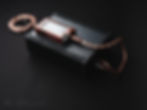
INTRO
My history with Zahl dates to Munich High End 2024, when I had only started my AFI (amps for IEMs) journey, something that would evolve into a mainstay in my audio journey. I went to MHE try headphone amps, and headphone amps I tried. About 25 of them actually. It was two days of ultra intense listening. Interestingly enough, the Zahl booth was right next to the entrance, and on my first day, after about 30 seconds of scanning the room I beelined to the Zahl booth. With my personal history as a musician and studio engineer I was quite aware of the Legend status of the HM1 already, largely considered to be the one and only in that realm. I was greeted by a very inviting, warm and gentle man behind the table, we chatted for a while before I read his name tag: Micheal Zähl. This was the man himself, the legend behind the legend. Being a super inspired and deeply emotional (ahem) audiophile such as I, it was clear Micheal was as passionate about audio as I was - no small feat. I ended up staying at the Zahl booth for quite some time, coming back again later that day, and again the following morning. He even went out of his way to find me an adapter to use my LP6 AE which was so kind. We developed a friendship, he seemed genuinely amused by my extreme passion and overly excited nature, and I really enjoyed my time chatting and getting to know this kind and extremely talented gentleman.
The HM1 blew me away. With my studio background I had never heard such a transparent amp - absolutely nothing was added, none taken away, instead all you get is enormous power, utterly black background, amazing technical abilities and pitch perfect staging. Something I would actually trust to mix on, or close my eyes in my favorite chair and just melt into audio Nirvana. The only thing that I shied away from was the price, not a cheap item. Also, it wasn’t the most suited for IEMs, being a bit too powerful and some hissing and waterfall noise could be heard with more sensitive units, something not abnormal for this kind of power plant. I loved it, told Michael so, along with what I would wish for if he ever made another one. He smiled, grabbed his laptop from behind the table, and showed me some CAD drawings of a new amp, one that had a 4.4mm Pentaconn jack and would be designed for IEMs as well. I was very excited, told him so, and after the show I went home.
Fast forward to this year’s MHE (2025), like I had done before, I made my way directly to Michael’s booth to find something familiar but new sitting on the table; the H1. It was all he had said, and more. After only a minute I knew he had nailed it out of the park on this one. It sounded exactly the same, but somehow he managed to make it smaller, and the new 4.4mm jack was not only DEAD silent but it also seemed more dynamic with IEMs. More controlled and more balanced, with greater sensitivity in the volume levels. Just as I had wished. This man walks the walk my friends, see a need and fill a need - the H1 is a perfect representation of that. My wish was apparently his as well. I’m sure the same goes for many of us, the H1 is an amazing representation of Michael’s lifetime of work.
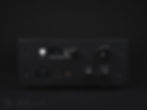

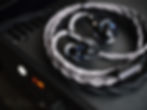
IN USE
This section can be super short, the H1 is sublimely simple to use. Plug in and go, switching between Class A and Servo has a moment's pause, you’ll see the yellow logo light up again when ready. The Stereo tool is great, I did loads of blind tests before noting I made the same choice over and over - one click away from Max. The amp does get quite hot, even with those fins, so don’t put anything on top if you can avoid it. There is input attenuation on the back panel, one for XLR and one for RCA in -10/0/+10 options. I left this on 0, but it’s great if you have an especially hot fixed output source or a quiet one that needs a bit more juice. The pan tool doesn’t do full 100-0, it’s more like a “fill left with right” studio balancer, adjusting for balance between the two by about 50% or so, as opposed to only hearing one side isolated. If you have trouble hearing in one ear this can be great, I left it in the middle for obvious reasons. All the knobs feel fantastic, with super smooth motion and a nice knurled finish. The build quality is amazing, this thing would look just as much at home next to an SSL console as it would on a desk at NASA. Military grade tough.
Before we get into my sonic impressions, let’s take a look at the specs from Zahl’s website.
H1 Reference headphones amplifier
Reference Amplifier with unprecedented transparency and precision, attention to detail and massive power performance. For both high-end enthusiasts and professional users. Designed and manufactured in Germany.
"The H1 will drive any headphone to its optimal performance. Offering the same core technology as its sister product, the HM1."
Special Features
-Class A power and a step beyond with switchable negative feedback servo while maintaining Class A operation
-Class A power
-Stereo base control for adjusting the sound stage to your preferences. Precision tool for widening or narrowing the stereo image or switching to mono.
Three output connectors
XLR 4-pole - ¼” Jack - Pentaconn
-Perfect impulse reproduction
-Ultra wide frequency response
-Extremely low impedance output precisely controls complex loads
-Designed and manufactured in Germany.
-Pure analogue design
-Consistent dual-mono layout
-Logic circuits without clock generators
-Integrated toroidal mains transformer with specially designed mumetal housing
-Straight linear power supply
-No external power adapter needed
-no-compromise selection of components
-no-compromise interior and exterior construction
Inputs
Line Inputs balanced – Impedance 20KΩ – max. level +23dBu
Line Inputs unbalanced – Impedance 20KΩ – max. level +23dBu
Headphones Output
Impedance Class A 0,8Ω, Class A & Servo 0,045Ω
max. level +23,5dBu (+/-16,5V)
Output Power per Side
RMS 4W/30Ω; 7W/15Ω
Peak 7,6W/30Ω; 11W/15Ω; 12W/10Ω (18W for 1,5ms)
Frequency Response
10Hz - 30kHz -/+0,05dB
1Hz - 500kHz better than -3dB at Headphones Output @ +6dBu
Noise
Same or better than HM1
Headphones Output THD (Total Harmonic Distortion)
Same or better than HM1
After all that, what can we surmise and paraphrase? For one the no-expense attention to detail is staggering. Every part of its design was extremely well thought about, improving even on the HM1. Two, the H1 uses dual mono power, which is one of the only amps I’m aware of that do that in one box. That means neither side has any sonic interference with each other, a clear path resulting in pure and unaffected stereo separation and ultra clean/quiet power. It also means you can listen in REAL mono, or using the Stereo Base too, adjust the stage size and spacial presentation to your liking. I can attest that the sound is essentially unaffected, the center of the stage stays the same, instruments and voices are unaltered, while the stage size increases off to the sides and above with air, space, reverbs and decay. It’s not a subtle thing, a very useful too. I do hear some slight thinning in the uppermost registers at the extreme end of the stage control, though I believe it’s more my perception of the details I’m hearing being isolated from the rest of the spectrum, presented in a less constricted space. That said, I do prefer the stage control one step away from max, creating the largest stage size but remaining the most realistic to my ears. This is of course headphone or IEM dependent, your preferences may well differ from mine depending on what you’re trying to get out of the tool. This works in the opposite direction too, adjusting the tool for a smaller stage, which is an interesting idea for those that prefer a more intimate and centered stage vs. something overly spacious or otherworldly. The ability to listen in true mono is a great tool for checking a mix, I’m not sure if audiophiles will appreciate this, unless they’re big fans of early Beatles records or 40’s and 50s jazz that was recorded this way.
Using pure class A power is great, giving the option for Class A Servo is even better. As Zahl mentions on their website, this option was designed to give users control of how they prefer their presentation while remaining in pure Class A. One is not “better” than the other, and in my testing it was mostly the size of notes and bass quantity that was affected. Class A is very transparent and note weight remains consistent across the FR. Switching to Servo fleshes out the bass and lower mids, while increasing the note weight and slightly engaging the transient attack for a fuller sound that remains very resolving. Class A in more neutral stage wise, with Servo going off a bit more of a spherical stage and increased holograph. My preference depended a lot on my IEM choice, with STORM sounding it’s best from Class A, while Dio benefitted from a bit more weight and fleshed out mids in Servo mode.
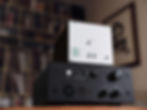



The rest of the specs lead us to know the H1 is a very flexible and adaptable amplifier, one that can power literally anything. I’ve tested it with the Susvara and it barely broke a sweat, with plenty of headroom to spare. Thanks to the ultra low impedance output, with IEMs I was very accurately able to control the volume without dramatic jumps in volume or noise of any kind. The gain curve is super smooth, and as there is no clicked attenuation you can very precisely control the volume you want. As I mentioned before, the H1 sounds more dynamic and controlled with IEMs, so if you’re considering either amp and planing to use IEMs at least part of the time, the H1 is the better choice. Of course the inclusion of native 4.4mm is also a big plus.
Looking at the differences between the HM1 and H1, there are a few. There is no longer the big external PSU, it’s now internal in a very cool custom made Mu-Metal inclosure that guarantees whisper quiet performance with no noise. On the faceplate you’ll notice some controls have been omitted. We have the Class A/A Servo selection knob. We have the stereo base control, volume, as well as L/R balance and..nothing else. I love it this way, super simple and elegant. Personally I need nothing else, what makes this amp special is all here for my needs. The cross-fade, compare or mix source and sound adjustment controls are no longer there. These are quite important if you’re using the H1 as a mixing tool, in the studio this is paramount for AB comparisons. But, for listing in an audiophile environment, or even just basic mixing or listening back, the H1 has all you need. If you’re investing in the H1/HM1 for primarily studio professional use then the HM1 should be considered, but if you’re an audiophile the H1 makes more sense. Especially if you own and plan to use IEMs, H1 is far better. They sound exactly the same, so choose based on your needs, and of course the price discount may very well help persuade a few that held off until now.
SOUND
The H1 is a beast. The sense of headroom is massive, and gives one the feeling of a race car just sitting at idle. So much in reserve, all you need to do is ask nicely. Or ask not so nice and be treated to getting your head slammed into the headrest with a sudden blast of power and nuclear precision. I’ve said how transparent the H1 is, but don’t let that confuse you into thinking it’s bland, stale, cold or boring. Far, far from it. The H1 is hugely dynamic with slamming punchy bass that reaches as deeply as the original recording can handle. Rumble city, as well as deeply textured and fantastically controlled bass. Some of the punchiest and most delectable bass I’ve heard actually. I tend to test bass texture with a few choice bass players; for modern electric Ghost Note’s Mono Neon, for upright Avishai Cohen, for electronic Om Unit and Kryptic Minds. Regardless of the record the H1 bass remains ultra faithful to the timbre, texture, and weight of the original. It’s so well supported, the sense of headroom and control is truly astounding. Never do I feel it’s imposing something, or coloring the sound towards its tuning. Avishai’s bass is so incredibly textured, I can clearly hear the growl from the bow or his immensely power attack with fingers. Mono Neon’s bass tone is one of my favorites, his active pickups and deep sub tone with clear punchy attack can easily be muddied or made too wooly with some chains. Not so with the H1, it sounds perfect and soooo deliciously punchy. Even with synthesized electronic bass we get exactly what we asked for. Without sounding like a broken record here, the transparency of the H1 is shown in spades in the low end, something that can often be overlooked when designers focus on the mids and treble over all else. No more, no less, just fantastic bass.
Mids on the H1 are extremely detailed, with strong levels of micro details and textures. I hear every nuance, every lick of lips or string slide, brush on snare head, all presented to me on a silver platter. There are fantastic levels of macro dynamics presented here too, the dynamic range of this amplifier is stupidly good. No matter the volume, the sonic pipe is overflowing in all frequencies with ultimate precision. It would be easy to say that it’s super detailed, (it is) but what matters most is the sensation of realism and accuracy that can be contained in that detail. The balance between musicality, detail, accurate timbre, lush enveloping breathy vocals and crisp biting guitars is something that normally cannot be done at the same time. The H1 handles all this with ease, and recreates a faithful presentation, crystal clear. Periphery guitars are like razors, super crunchy and dirty with crystal clear separation between the layers and that magic bite and grunt only detuned axes can provide. Even the ultra low and gut shaking Djent chunks seem superbly controlled. They never get muddy, or feel any sag or undue stress. Effortlessly clean acoustic strums, even the baritone rumbles of Pat Metheny’s One Quiet Night or Mike Littieri’s Deep electric albums are so precise it’s amazing. The sense of accuracy and depth is what makes the H1’s presentation so incredible, what could be muddy or wobbly with other amps is always kept taught and controlled. Try out Snarky Puppy’s Trinity and be treated to about a dozen musicians playing ridiculously impressive and impossibly musical intertwining melodies that remain clear, distinguishable and superbly separated. Wind and brass instruments never feel blaring or honky, overly brilliant or shrill. Drums on a well recorded album will blow your mind. Be it Them Crooked Vultures, Deftones, Rolling Stones or Dave Matthews, they are tight, concretely solid. Vocals are exceptional too; Kandace Spring’s vocals are sultry and capture her amazing range and unique style with perfection. Agnes Obel is effervescent and airy, Asgeir’s signature mix of ultra low-fi and clarity driven mixes are so good, and never venture into analytical or overly sterile.


It bears mentioning that at this point we might reach preferences and differing points of view. If you like lush and warm mids, tubes even, this is not that. Of course it’s not, that isn’t at all what the H1 is going for. If the record is lush, it will be lush, if it’s bright and brick wall mastered, so it shall be here too. While the H1 can absolutely be lush and inviting, it will only do so when the recording was, and even then it will err on the side of clean and correct over any embellishments no matter how small they might be. Because of this transparency some of my IEMs revealed new and sometimes unfavorable nuances I had never heard before. We’re all so used colored gear that we may never have heard the “true” essence of the recordings we hold so dear. Having an amplifier like the H1 is paramount for anyone that treasures the original recording, and its transparency taught me a lot about my gear over the last few weeks. It’s not that I didn’t like what the H1 showed, precisely the opposite. The H1 isn’t brutal neural, it’s just so transparent that your IEM’s, or other gear’s true colors will shine forth with great abundance.
H1 Treble is very detailed, even to the point of being intense in some situations. I don’t mean it’s sparkly, or brilliant, or bright at all, no sir. But it is very transparent and many listeners may not be used to, or even aware, of such transparency on their favorite recordings. If you like ultra processed max-mastered pop music and you use a bright headphone you may very well feel it to be too much, but that’s merely how the record was made. You’ll hear bad cross fades or mistakes in recordings you know by heart. In so many ways, the H1’s mastery seems especially prevalent in the treble. It is crisp but smooth, not boosted. It’s very extended, but not some out of this world ultra height that removes us from the grounded and deeply natural. It can be airy, it can be relaxed, depending on the material. It is effortless. It is fantastically resolving. It can be a bit unapologetic too, which is where we may again find ourselves at a crossroads for some listeners. Those who are used to overtly “extended”/“sparkly” types of presentations may need a bit to adjust to the H1’s literally spotless treble. There is no extra sparkle here, but it’s not going to mask it either. It’s not smoothed out or veiled either, so if there’s trash in the mix you’ll hear it. But, and this is the kicker, when the recording is great you’ll be treated to some of the best top end you’ve ever heard in your life.
Crashes and splashes are quick and precise. Not cut off, but one hears the clarity and precision of the edges very strongly in this area. Something like Sevendust’s Praise, (a well known expertly mastered recording) the energy and tactility is very strongly presented with the H1. The cymbals are on the verge of to much intensity, but that was surely Chris Lord Alge’s intention. Capturing the energy perfectly, like in a live setting, they are powerful. Listening to Snarky Puppy’s Trinity I am hearing new levels of top end clarity in the intro, even another guitar faded off to the sides I wasn’t previously aware of. Small wisps of detail, sound design and swaths of padded reverbs cascade with utter control and clarity. On Finnegan Tui’s “Once I’m Gone” the intro has ocean wave like details all around your head, and then deep sub rumbles followed by a very rich a clear vocal dead center and above your head. What was the most impressive to me was the clarity and continuation of each of those aspects when all present at the same time. Especially in the air and upper registers, the H1’s almost obscene clarity allows for this in a way I have yet to hear in another amp besides the famous MK465.
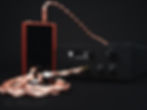


A NOTE ON TRANSPARENCY & SOURCE
I’ve been speaking, at great and surely exhaustive length, about the transparency of the H1. Yes, it’s lacking any color or adverse changes to the pure original source file. Yes it is extremely resolving, one might think that it can be boring, or sterile or cold. Well, the POINT of transparency is the ability to let your gear shine as it was intended. If you like a warm sound use a warm source, and the H1 keeps that tone exactly. If you want a super detailed and clinical sound use a clinical source with heaps of detail. The H1 once again will not derail, or adversely affect the source, just give it more power. You may have noticed in my intro I mentioned two DACs and two DAPs that I use for all my listening. For a desktop experience I use my SAEQ Pandora’s Box, a wonderful little DAC for about $1k that sounds amazing. It’s mid forward, very musical and on the smooth side. Nor overly warm but more musical and emotional over critical. Add the H1 to the mix and voila, a more muscular and powerful Pandora, keeping that exact tonality. If I want something more neutral I use the Weiss DAC204 with its insane levels of detail, large staging and super clean and clear studio style sound. This combo is fantastic for critical listening, and if I was to mix off my home gear I would use the Weiss. This with the STORM and SS8 cable is the finest studio sound I have ever heard from an IEM setup. It’s staggeringly good, with outrageous levels of detail and clarity with pitch perfect positioning and balance like a set of near field monitors.
If I want a real analog and true to record sound with some thunder, I always use my LP6 Ti AE DAP. It’s my favorite of all time! Using four of the best R2R chips ever made, the LP6 AE goes more than head to head with the best desktop gear available, I prefer it over most desktop options even in the $8K+ categories. Via the LO it has thunderous energy, texture and luscious mids that are out of this world, truly. My 320MAX Ti is modded by NPAudio and it’s also a very analog, yet less rich and more neutral source. I love the STORM out of it as a DAP. With either of them I add in the H1 and I get exactly that sound, just bigger and with more headroom and control. It doesn’t overtly smooth or brighten, color or strip any of the magic, it’s just MORE. I have never heard an amp do anything so cleanly and genuinely as the H1. I get that MAX+STORM sound, just bigger and better. The Morpheus or Astraeus are fantastic with the LP6 AE, they do impact a whole slew of color and personality that can be soooooo amazing. Ultimately if I want to stay true to the source, the H1 again stands alone. I’m not saying that I prefer the LP6 AE with H1 over Astreus, or Morpheus, or MK465 for that matter. They’re all amazing and unique, all meritorious and phenomenal in their way. But what makes the H1 so special is its uncanny ability to invisibly empower your gear with all the extra oomph and splendor an amp can provide, without any of the changes they bring.


COMPARISONS
This is always a fun section, because while comparing amps I am both drawn to their similarities, and made more aware and appreciative of their differences. So it is with the H1, it’s the only pure reference amplifier I have ever heard, and so some direct comparison is inevitably slanted. Nothing sounds like it, and if that’s the sound you want, or you love the other components in your chain as they are and need ultra transparent power, the H1 stands alone. Instead of an Apples to Apple comparison it’s more like Vanilla ice cream compared to all other flavors. I for one LOVE Vanilla and when done right it is by far the most incredible of all.
vs. HM1
As indicated in the spec and intro sections, they sound exactly the same. For IEMs the H1 is more controlled and dynamic with the smaller divers and mixed technologies that go into the those fancy shells. Keeping in mind the H1 is smaller, cheaper, needs no external PSU, and is more comfortable for IEMs the H1 is your best bet for IEM users. Sonics are identical.
vs. SAEQ Morpheus (review)
This is an interesting one, as the Morpheus is also a very powerful and dynamic little solid state amp that defines traditional logic for value and size/power. They are both even, natural, and expansive. While the H1 is a studio ready transparent machine -quoting SAEQ’s designer Dragan- the Morpheus is a hedonistic monster which I totally agree with. It’s still “correct” but it carries a more colored and emotional sound that just goes a different way. While listening to Morpheus I don’t necessarily find it warm or overly lush, but when AB’ing with H1 it becomes quite clear, they have some stark differences.
Morpheus is thicker, more colored and mid forward. It has more bass, and more personality. It is also more powerful based on my use and note taking of volume settings. It is more impactful, more warm, with all aspect of the FR being portrayed as dense, and utterly enjoyable. I love the Morpheus, its fat and organic lushness has captivated my ears the last year, getting daily use. It’s not tube warm, this is most certainly a Solid State amplifier, it is however deeply musical and inviting. The H1 is leaner, more accurate and overall more detailed. More control, though that is made obvious through its more revealing and leaner signature. The H1 top end is more revealing, and can result in some listener fatigue with bright tracks or long sessions, but only in comparison. Edges are more etched and clear with H1, transients and decay are tighter too, something I do miss from the Morpheus’ unreal huge drum sound. Put on ‘When the Levee Breaks’ by Led Zeppelin and you’ll know what I mean. Morpheus shakes your bones as the vintage drum heads have this huge reverb on them that lasts for days. The H1 is tighter, and thusly the decay is shorter and less invasive.
They both go for completely different presentations, and should be compared as such. If you want studio reference perfection the H1 is anyone’s best choice. If you like a bit more flavor, more bass and denser mids, with a more polite and emotive presentation the Morpheus is hard to beat. Especially for its price of 3600 euro vs the H1’s ~7000 euro double asking price.
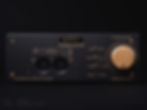
vs. MK465
I spent some serious time with these two at CanJam London 2025 and I was very happy to have had the opportunity. The 465 is also a legend, arguably the best if not top 3 of all time. Once again tuning characteristics are very different. They are both Solid state, both very powerful, and very detailed. Where the H1 goes for ultra transparency and studio reference, the 465 is massive and very weighted in its presentation. The 465 is so dense and powerful sounding, it’s really a marvel. It is also exquisitely detailed, with some of the best treble I have ever heard, somehow remaining weighted and full at the same time. The 465 is more like the Morpheus, but cleaner, bigger, more detailed, with headroom for days. Not colored but deeply musical and deliciously weighted.
It is a tremendous amplifier.
The H1 is leaner, with more attention paid to transparency and speed, though the 465 is also crazy fast and crisp too. There is more bass, deeper reach, and thicker mids on the 465. More decay and acoustic harmonics as well. The top ends are quite different, 465 being smoother and more relaxed, while H1 is more transparent and leaner. The biggest take away is how relaxed and lush the 465 can be, while remaining just as detailed as the H1 is. It’s really a monster, and seeing it’s almost 3x the price of H1 there might be something there. But, and I mean this profoundly, the H1 is a masterclass of reference tonality and many may prefer the H1 for their style of music.

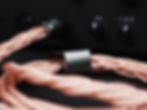

vs. SAEQ Astraeus
Another comparison of monsters, the Astraeus is SAEQ’s newest flagship, a 10k euro hybrid featuring tube, germanium and silicon transistor input stages and immense power. It is also an insane amp - I have a review coming in the next few weeks that will expand on this, but for now I compare them briefly here. These two are more different in presentation than all the others, with the SAEQ occupying more the level of MK465 pricing and performance. Once again, the H1 is a pitch perfect studio reference amp, ultimate transparency. The SAEQ is totally different; ultimately expansive, rich and massively detailed with a stage and headroom only a tube pre/SS power amp could ever hope to provide. It’s not so warm for a tube amp, but the coloration and meaty body of the Astreus is wonderful.
The H1 is again leaner, but faster. It has a seemingly smaller stage, but is exquisitely cohesive and balanced. While the Astraeus is huge and vast the H1 focuses the instruments in the center and pushes the reverbs and decay off to the sides - if one was the AB them a few times (like I did) you’d find the stage on H1 isn’t really smaller, the instruments occupy a smaller space, but overall it’s massive in it’s own way. It is uncolored, neutral and punchy. The Astraeus is massively staged, much warmer and more colored, it growls and purrs over the H1’s perfection. Details are presented totally differently, I think they are both similar in terms of technical abilities, even as the SAEQ is more tubey and vast the details seems more focused on the H1. The H1 is less musical and lush, but that is by design. You certainly cannot studio mix with the Astraeus, it is meant for one thing only; guilty syrup covered lustful musical heaven. The Astraeus isn’t gooey or soft AT ALL, it’s actually quite natural and tight too, but the H1 is much more in this direction it’s hard not to mention this again.
Astraeus bass is much more growly over the punchier H1. Astraeus mids are bigger and more spacious while the H1 remains again tighter and feeling more precise - the SAEQ is more musical and emotive by quite some margin here. Treble is also very different, with Astraeus having a super silky and extended weighty top end not unlike the MK465, the H1 being more revealing and transparent. Apples to Mangoes here.
The fact the H1 is included with the likes of MK465 and Astraeus speaks volumes of what Michael Zahl has accomplished with the H1. It is somewhat smaller sounding, and far less colored yes. But it keeps up with the best when it comes down to control, precision, and technical abilities, and is more correct and transparent by a decent margin. It all comes down to what you prefer. Perfection over flavor, grandeur over transparency. Apples or Mangos, Vanilla or Phish Food. The real question is why not both!


CONCLUSION
I have so deeply enjoyed my time with the H1 the past few weeks, it has opened my eyes (and ears) to many things. For such a tiny box to make so much magic, in such an invisible way, is astonishing. As a musician, engineer and audiophile the H1 is something of a unicorn in that it could easily do all I need in one box. It could be my only amp for work and play. Thankfully choices like that don’t have to be made, and having different amps, or totally different chains lying around the house is possible and ultimately more fun. But the fact that it could do it, is a wow for me.
I love this thing to pieces. It’s sonically faultless for the style it goes for, which is something I really enjoy, and many other do too. The perfect storm of technique, balance, transparency and sheer audio will. The Zahl H1 is a testament to studio prowess and good old fashioned audiophile fun. I therefor award the Zahl H1 my highest recommendation and a perfect 5 star rating, brilliant!
The Zahl H1 is a tremendous amplifier, full stop.
My reviews take me an unbelievable amount of time to do, along with the photos they are truly a work of passion and dedication. I put my whole soul into these, thank you so much for reading, I hope you enjoyed the review. I wish to thank Michael Zahl for sending me the H1 to play around with, the question is how can I possibly give it back to him now. You’ll have to pry it out of my hands!!!
Be well friends, enjoy the musical journey!
